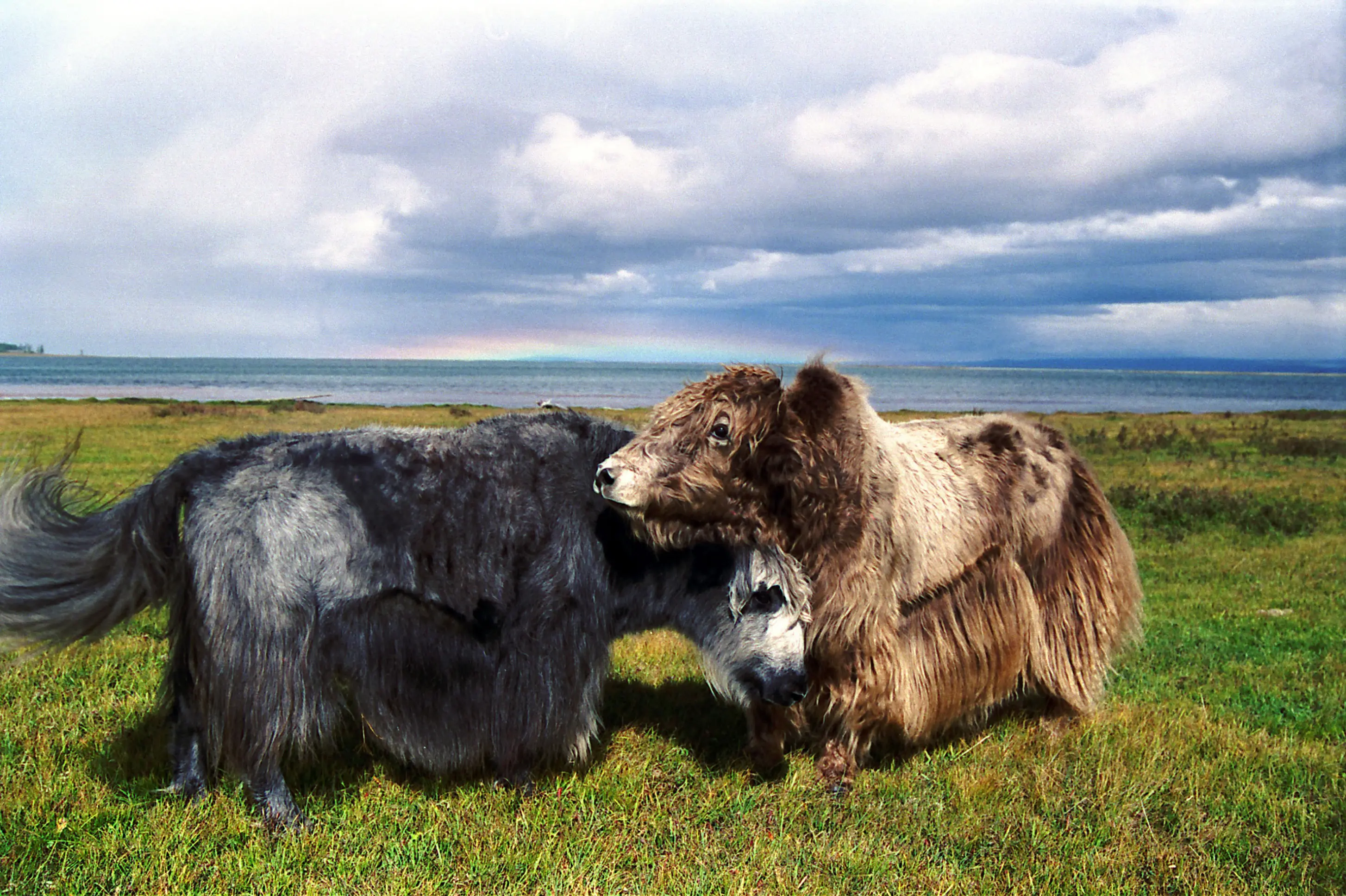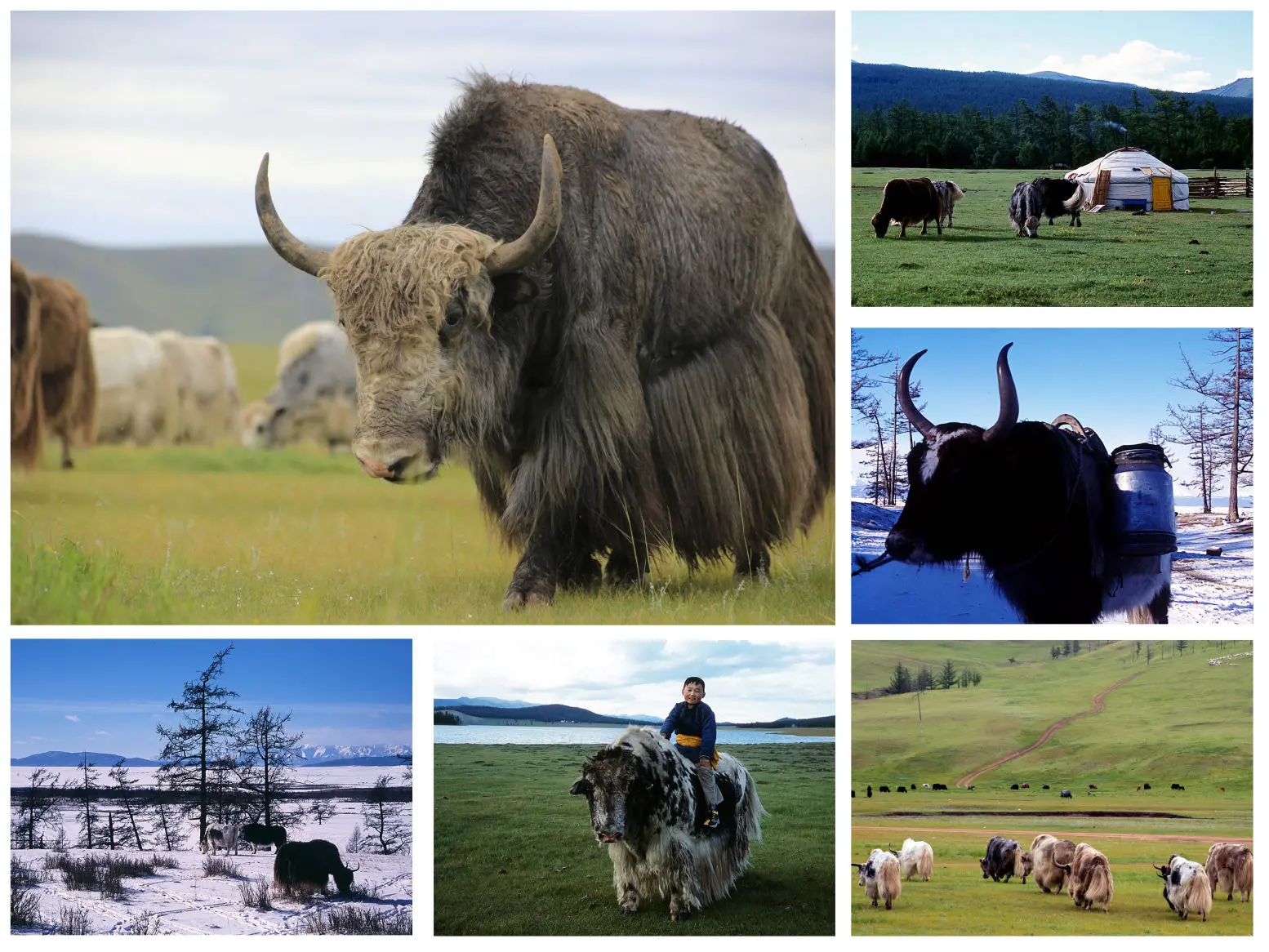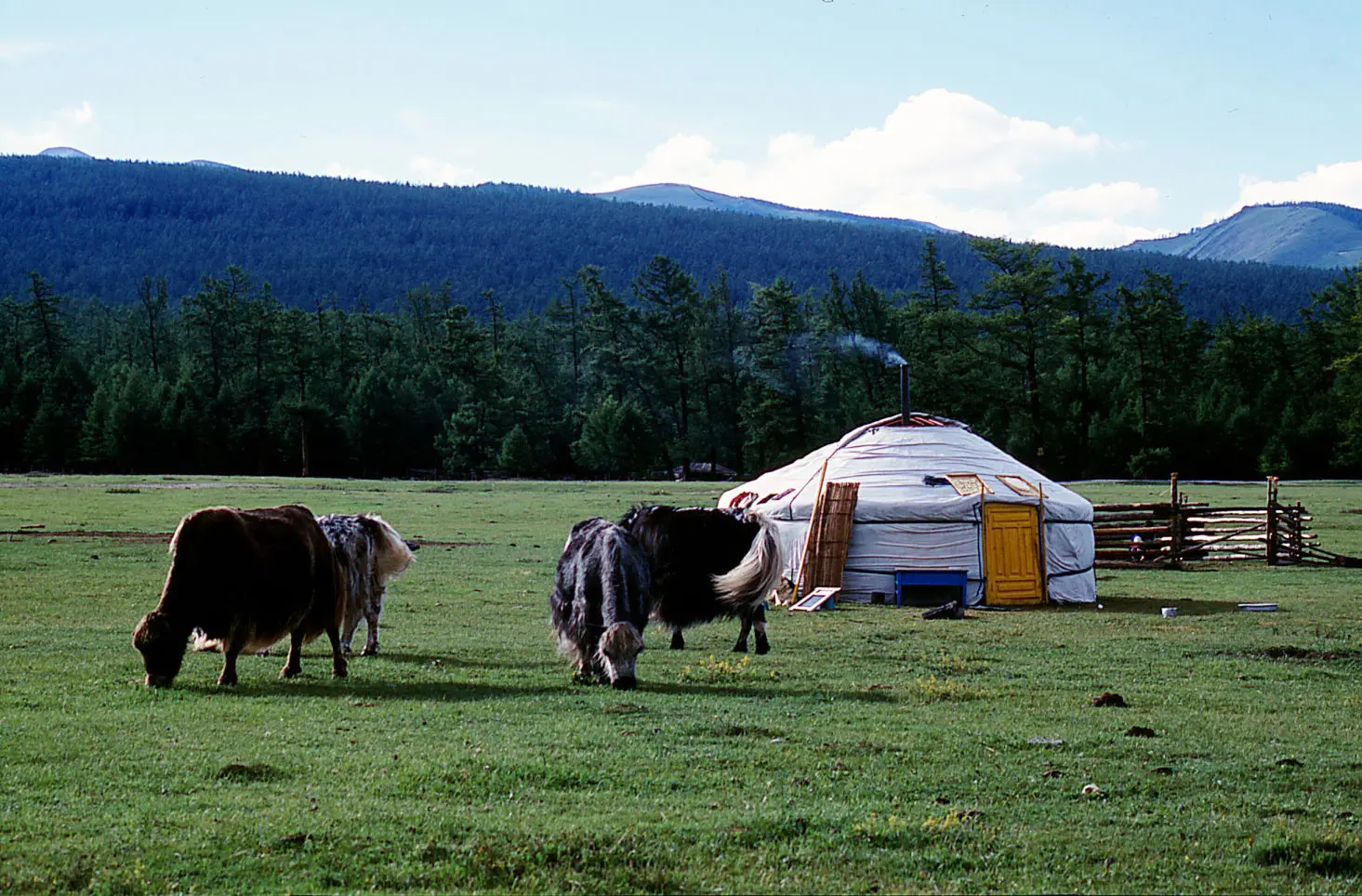
Yak wool is your doorway to guilt-free fashion.

Mongolian Yaks
The yaks were first introduced to Mongolia together with Buddhism, when monks used them as transport medium on their pilgrimages. Today these long-haired, frost-hardy bovids live predominantly in high mountainous areas of Mongolia.
Mongolian yaks are a kind of "hairy" cow - they know how to find grass underneath snow, which cows don't, and have other high altitude adaptations. There are two types of yak in Mongolia, according to the area where they are raised - the Khangai and the Altai mountain yaks.
Approximately 4.6% of the grazing land of Mongolia is located in the high mountain regions and is suitable for yaks to graze.
Though the livestock population of Mongolia was relatively constant for 60 years, their number increased rapidly in 1990's (by about a million/year, reaching 33.4 million in 1999) as Mongolia underwent a transition period from socialist system to the market economy and as livestock became privatized. The number of yaks also increased in this period, by 42.5% between 1994 and 1999. There were 813,300 yak registered in Mongolia then.
During the market economy period, the number of yaks reduced because of natural disasters and their usage for meat production. In 2013 the number of yaks went down to 560,000.

Yak Festival
Yak Festival is celebrated every year in Mongolia. The festival starts with yak racing. The 20 minutes yak racing is probably one of the world's slowest mounted racing. By the time the yaks arrive at the finish line, most of them are walking or barely trotting.
The next competition in the festival is the yak lassoing. Some men on horses try and get the yaks running, while other men on the ground lasso the yaks. Once the contestant lassoes a yak, he has to fight to control the beast.
The last yak-centered event in the festival is the yak polo. It's great fun to watch the untrained and untamed beasts running in an undisciplined way around the field as the riders attempt to hit a ball with their hammer.
Quality all the way
Our supplier in Mongolia specializes in yak down. They process up to 50% of yak wool collected in Mongolia. They are meticulous and take extra care at each stage to get that extra soft touch in their finished products.
The three secrets to their natural and undyed yak down that rivals merino’s sturdiness and cashmere’s softness are: combing, de-hairing and finishing. Yak down is combed from animals by nomadic herdsmen after the winter thaw, some time around June each year. The raw hair collected from a network of herders in the Bayankhongor and Arkhangai provinces is then delivered to their de-hairing facility in Ulaanbaatar where it is sorted by color then washed, and de-haired.
Metaphorically, de-hairing is like whisky or cognac distillation, a procedure for transforming raw material into a glorious essential elixir.
While others run a batch of raw yak fiber through the dehairing machines four or five times, losing some 2/3 of the bulk in the process, our supplier runs seven or eight de-hairing passes resulting in a drawdown of 80% of the original mass. The exquisite 20% that remains is the finest quality yak down. Their yak down products were selected in 2012 to be included in the Mongolian Noble Fibre list - only the most exclusive fiber varieties qualify.

Local, natural and un-dyed
Many knitwear are made using yarn that is bleached, or worse, bleached and then dyed. Unfortunately, it is nearly impossible to bleach fibers without damaging the outer cuticle and significantly diminishing the softness of the finished product, our yak down is 100% natural - no bleaching or dying. This is why our yak wool products only comes in the colors that yaks come in. The effect of natural and un-dyed down is clearly noticeable when touching our products. A special radiance that comes from the natural coloration is clearly visible in our products even to an untrained eye.
From the collection of yak down to sorting, washing, de-hairing, spinning and knitting/weaving, everything happens in a single country - Mongolia. Our supplier directly engages in all these phases of the supply chain. Having the whole supply chain in a single region and being engaged in all the phases is not only environmentally but also socially conscious.
Made with
HTML Code Generator